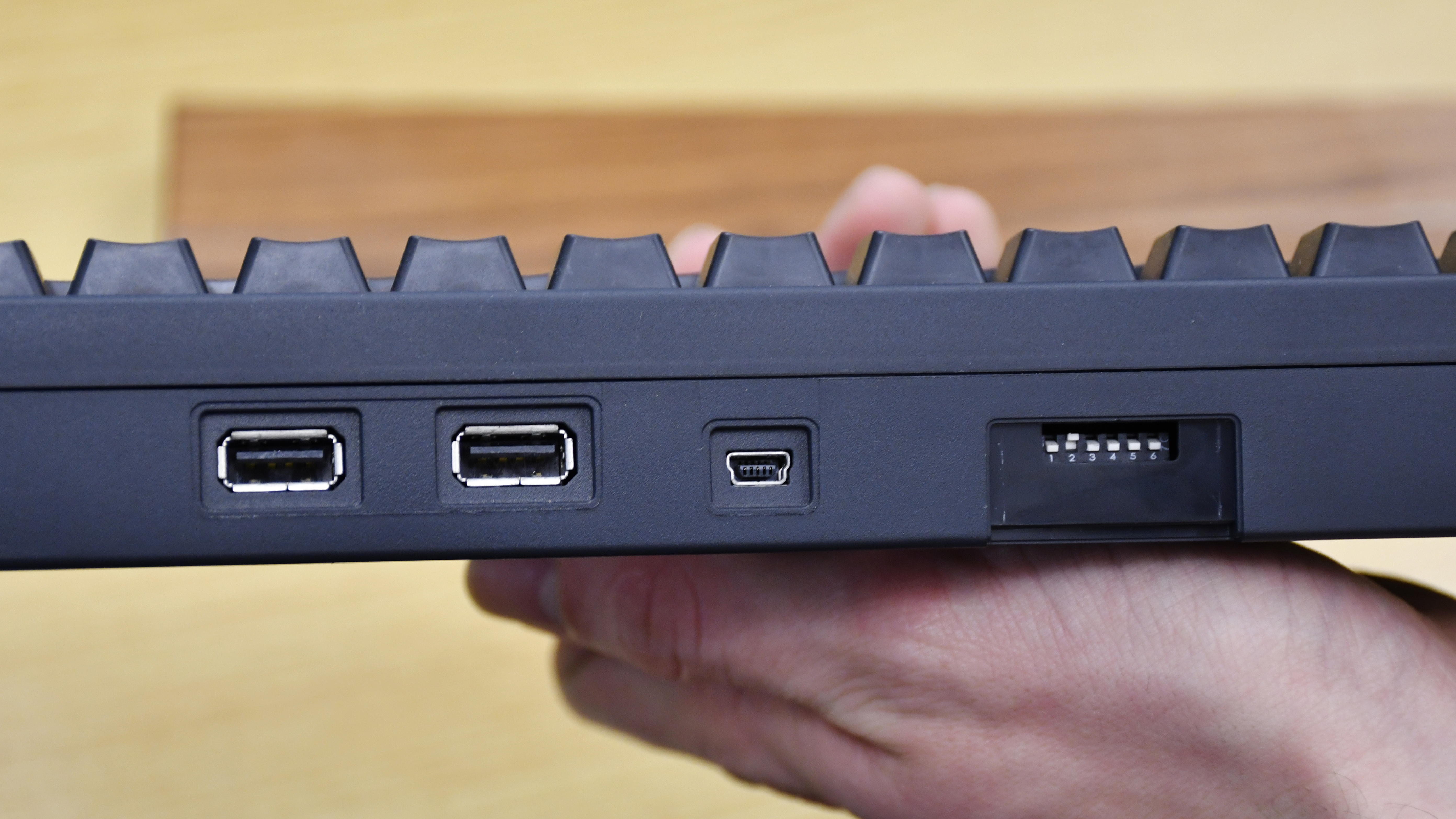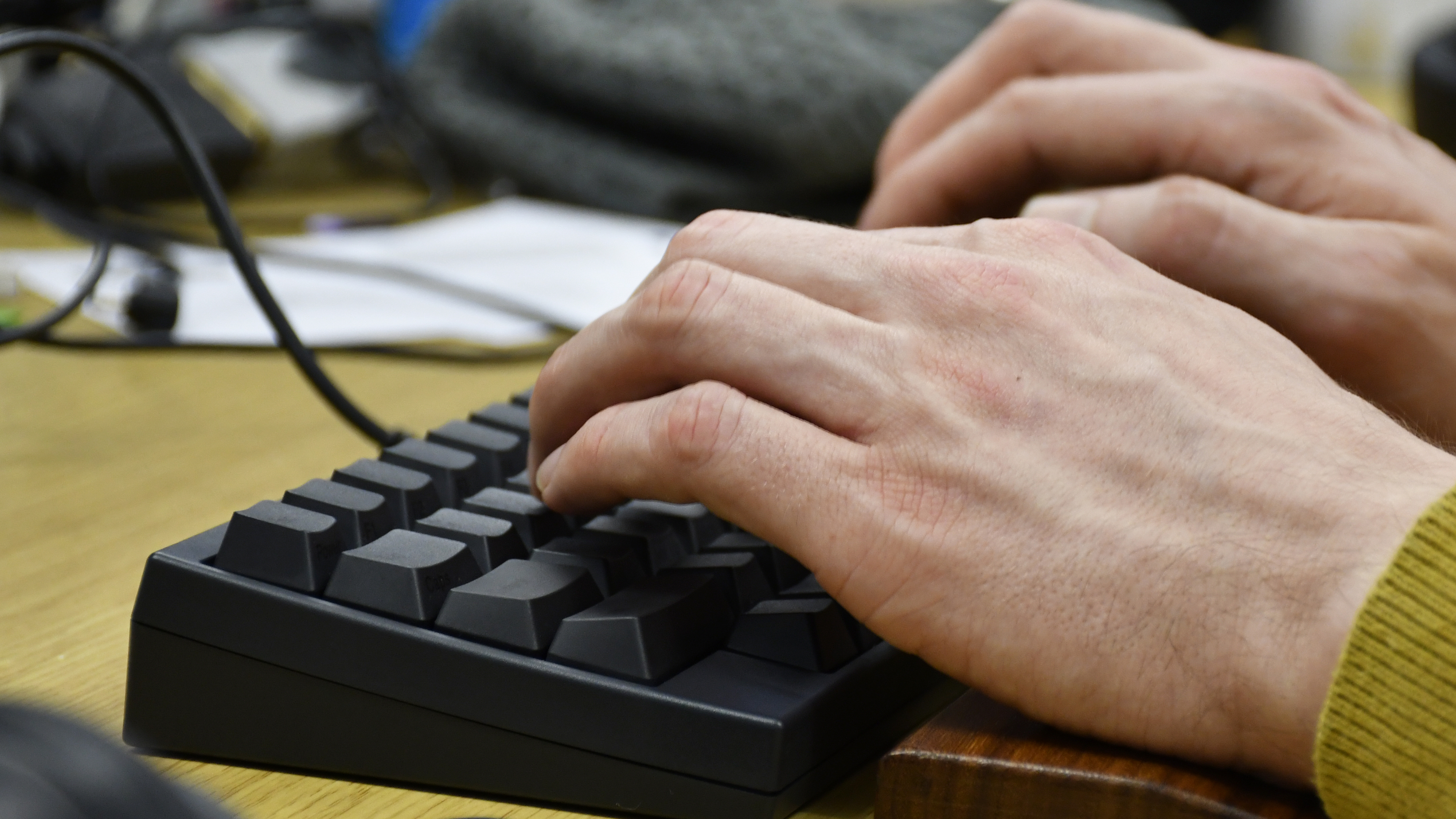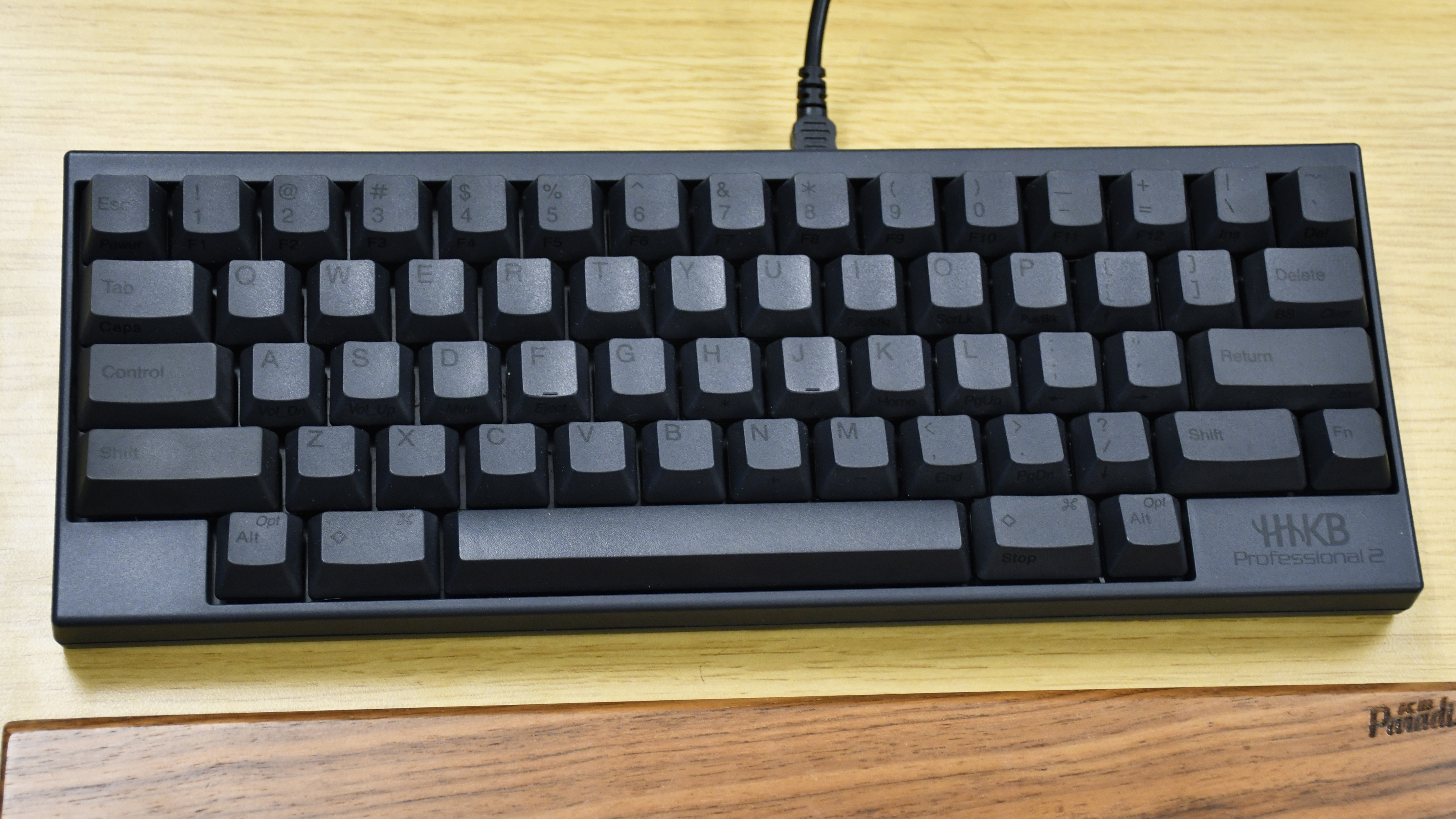TechRadar Verdict
With its minimalistic design and exorbitant price tag, the Happy Hacker Keyboard Pro 2 feels designed to turn heads. But this sleek form-factor has its disadvantages that linger on even after you’ve scaled the keyboard’s initial learning curve.
Pros
- +
Small form factor
- +
Topre switches a pleasure to use
- +
Designed to last years
Cons
- -
No dedicated arrow keys
- -
Unconventional layout
- -
High price
Why you can trust TechRadar
Spend any amount of time around the keyboard-obsessed portions of the internet and you’ll inevitably hear the Happy Hacker Keyboard Professional 2 mentioned.
It’s a piece of hardware that’s almost specifically designed to appeal to an enthusiast niche. Its so-called ‘60% form-factor’ means that it doesn’t feature a num pad, arrow keys, or even a function row. Even the keys it does have are positioned like no other keyboard we’ve ever seen, with a ‘Control’ key where the ‘Caps lock’ key should be, and a backspace key sitting where you’d otherwise find a backslash key.
In other words, it’s a keyboard that’s happy to tweak and change the keyboard layout that the rest of the world has used unquestioningly since the late '80s.
The $225 (£260, around AU$290) HHKB Pro 2 doesn’t care if you’ve spent five, ten, or even 20 years building up muscle memory that works a certain way. It has faith in its own way of doing things, and you’ve got to respect its bold choices.

The fact that it’s got its own way of doing things is one thing, but whether you’ll want to relearn how to use a keyboard is another thing entirely, and we’re not convinced that the effort will be worth it for anyone other than the most hardcore of keyboard fanatics.
But before we get into the details, let’s take a closer look at the keyboard.
Design and layout
The HHKB Pro 2 is a tiny piece of kit. Despite using fullsize keys it’s got a footprint that’s similar in size then the keyboard on a 13-inch MacBook Pro. The secret is how many keys it's shed to get that small.
Whereas your typical MacBook Pro keyboard comes packing a full function row from F1 to F12, the HHKB Pro 2 dispenses with this entirely. Whereas the Mac keyboard has a tight quartet of arrow keys in the bottom right hand corner, this keyboard has you use a function key to reach them - you almost get the impression the designers thought the added keys would spoil its symmetry.
All the keys that you’d need to operate a modern computer are still there, but you’ll need to use the function button to access most of them. Fn plus 1 through 0 will get you F1 to F10, and other combinations will access other keys such as 'Home' or 'Scroll Lock'.
Despite the sheer amount of different things each key can do, the keyboard as a whole looks sleekly designed, with lovely textured keycaps that have their secondary functions printed on the side in a color that’s just a shade darker than the matt gray plastic they're printed on.

The function keys take a little getting used to, but the first time you use the keyboard your biggest issue will be just how differently everything is placed. Where normal keyboards have a caps lock key, the HHKB Pro 2 places its control key, and where you'd usually find a backslash you'll find a backspace.
The former change makes a certain amount of sense (after all, when was the last time you meant to hit the caps lock?), but despite the latter bringing a useful key closer to our fingers, we could never get fully comfortable with it.
A pair of passthrough ports on the top of the keyboard
allow you to plug in USB sticks and mice without having to reach round to the back of your PC.
It’s strangely disorientating losing this particular piece of muscle memory, and it’s even worse if you’re moving to the keyboard from a European (aka ‘ISO’) board with this layout's fat 'enter' key. Trust us, you're going to start pressing enter instead of backspace a lot.
It’s a steep learning curve, but it’s not an impossible one to scale - so long as you don’t have to regularly switch to using a more traditional keyboard. If you have the luxury of working from home then this might not be an issue, but few are going to want to have to cart their keyboard between every location that they use a computer.

With perseverance (and the exclusion of other keyboards) you'll eventually overcome this, but we never fully got used to the lack of arrow keys.
It's hardly a problem that's unique to the HHKB Pro 2, but at least with a board like the Pok3r the arrow keys were accessed through a nice neat triangle of shortcut keys similar to the WASD combination most gamers will be familiar with.
With the HHKB Pro 2, by comparison, you’re using a set of arrow keys that are split across three different rows on the keyboard (on the '/', ';', ''' and '[' keys).
Using the arrow keys ends up feeling awkward even when you’re just holding down two keys, and your hands will contort further as you struggle to press more complicated combinations. Want to quickly highlight that last word you wrote (on macOS)? You’ll need to hold Fn, Shift and Alt before pressing the semi-colon key.
Forget trying to do any advanced spreadsheet work on this keyboard.

Minimalism is one thing, but removing keys that are so fundamental to the functionality of a keyboard is another thing entirely.
You can customise the location of the keys to a small extent using a series of switches that are hidden within the top of the keyboard. These handle functions like swapping the Alt and Option keys if you’re using the board with a Mac, or moving the location of the Function key, but we never found that they overcame the fundamental issues we had with the layout.
Performance
Quibbles about layout aside, the Happy Hacker Keyboard Pro 2 is a lovely-feeling board to type on.
Depending on your familiarity with mechanical keyboards you may or may not be familiar with ‘Topre’ switches, which utilise a design that’s almost like a halfway point between rubber dome switches an traditional mechanical switches (most famously produced by Cherry).
Debates about the categorization of Topre switches aside (trust us, this is one part of the internet you’re best off avoiding), you’ll generally find that at their best they feel almost like weighted piano keys, albeit ones that are accompanied by a satisfying ‘thock’ sound as they bottom out.
The HHKB Pro certainly has this trademark feel, but for our money we just about prefer the feel provided by the Topre Realforce line of boards with their backplate-mounted switches (as opposed to the case-mounted ones found on the HHKB). The Realforce has a shade more solidity to it, while the HHKB feels like it has more flex.
It’s a distinction few are likely to care about outside of the enthusiast community, but when you’ve committed to spending as much money on a board as these cost, it’s one that will certainly matter to you.

Verdict
The Happy Hacker Keyboard Pro 2 has a cult status for a reason. Its combination of sleek design, Topre switches, and bizarre layout seem almost specifically designed to appeal to the kind of person who wouldn’t bat an eyelid at spending over $200 on a keyboard.
If you’ve heard about it on the grapevine, then there’s very little that we’d be able to say to dissuade you if you've got your heart set on it. We get it, it’s lovely and compact, it’s beautifully symmetrical, and the design of the keycaps has the kind of muted color palette that we can absolutely see the appeal of.
But after using the keyboard for an extended period of time, we’re just not sure that the benefits of its compact layout outweigh the costs. We can get behind the lack of a caps lock key, but does the backspace key really benefit from being a row lower when it’s still too far away for you to hit without leaving the home row?
And that’s without mentioning needing to use a Fn key to access the arrow keys.
The HHKB Pro 2 is a fun exercise in questioning established wisdom. After all, the modern keyboard layout hasn’t changed in the best part of three decades. But we’d argue that the Happy Hacker Keyboard goes too far to challenge the status quo.
It’s a fun novelty for the keyboard fan that wants to try something new, but if you want a tool with which to complete a day’s work then there’s little wrong with sticking to something that’s a little more traditional.
- These are the best keyboards available today
Jon Porter is the ex-Home Technology Writer for TechRadar. He has also previously written for Practical Photoshop, Trusted Reviews, Inside Higher Ed, Al Bawaba, Gizmodo UK, Genetic Literacy Project, Via Satellite, Real Homes and Plant Services Magazine, and you can now find him writing for The Verge.

